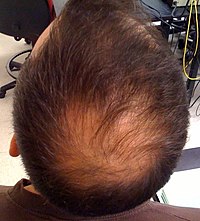
Photo from wikipedia
Abstract Whole-genome duplications (WGDs) have occurred in many eukaryotic lineages. However, the underlying evolutionary forces and molecular mechanisms responsible for the long-term retention of gene duplicates created by WGDs are… Click to show full abstract
Abstract Whole-genome duplications (WGDs) have occurred in many eukaryotic lineages. However, the underlying evolutionary forces and molecular mechanisms responsible for the long-term retention of gene duplicates created by WGDs are not well understood. We employ a population-genomic approach to understand the selective forces acting on paralogs and investigate ongoing duplicate-gene loss in multiple species of Paramecium that share an ancient WGD. We show that mutations that abolish protein function are more likely to be segregating in retained WGD paralogs than in single-copy genes, most likely because of ongoing nonfunctionalization post-WGD. This relaxation of purifying selection occurs in only one WGD paralog, accompanied by the gradual fixation of nonsynonymous mutations and reduction in levels of expression, and occurs over a long period of evolutionary time, “marking” one locus for future loss. Concordantly, the fitness effects of new nonsynonymous mutations and frameshift-causing indels are significantly more deleterious in the highly expressed copy compared with their paralogs with lower expression. Our results provide a novel mechanistic model of gene duplicate loss following WGDs, wherein selection acts on the sum of functional activity of both duplicate genes, allowing the two to wander in expression and functional space, until one duplicate locus eventually degenerates enough in functional efficiency or expression that its contribution to total activity is too insignificant to be retained by purifying selection. Retention of duplicates by such mechanisms predicts long times to duplicate-gene loss, which should not be falsely attributed to retention due to gain/change in function.
Journal Title: Molecular Biology and Evolution
Year Published: 2022
Link to full text (if available)
Share on Social Media: Sign Up to like & get
recommendations!